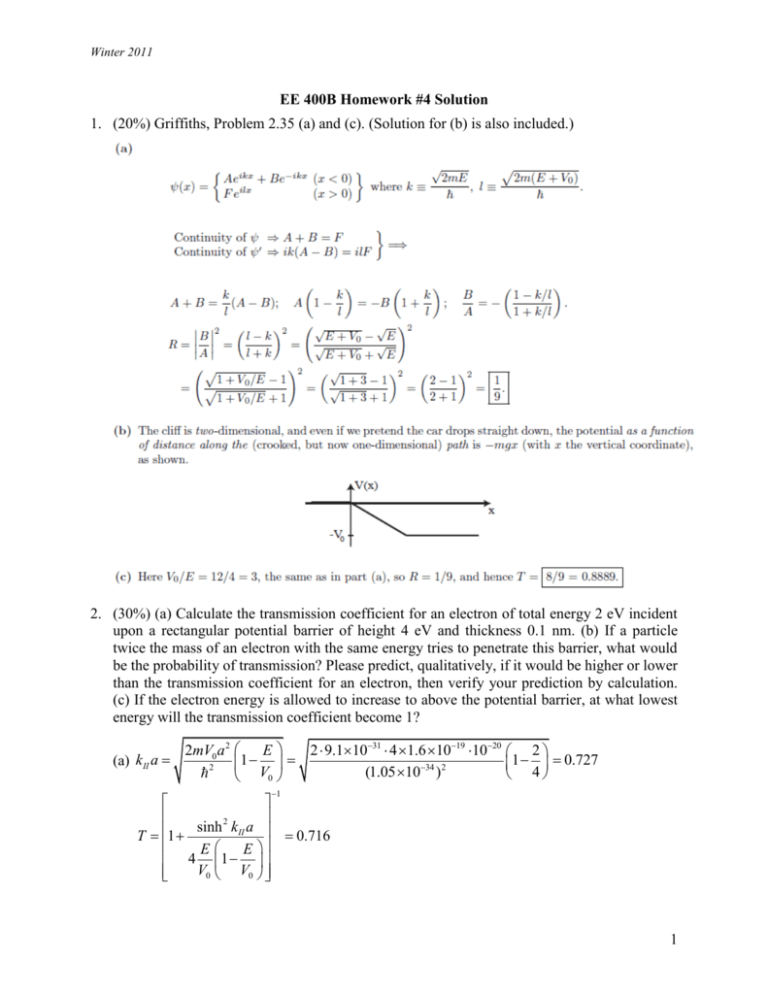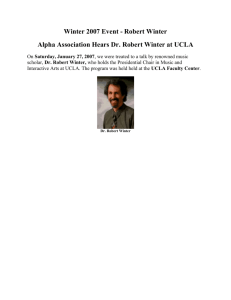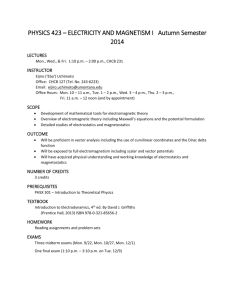Homework #4 solution
advertisement

Winter 2011 EE 400B Homework #4 Solution 1. (20%) Griffiths, Problem 2.35 (a) and (c). (Solution for (b) is also included.) 2. (30%) (a) Calculate the transmission coefficient for an electron of total energy 2 eV incident upon a rectangular potential barrier of height 4 eV and thickness 0.1 nm. (b) If a particle twice the mass of an electron with the same energy tries to penetrate this barrier, what would be the probability of transmission? Please predict, qualitatively, if it would be higher or lower than the transmission coefficient for an electron, then verify your prediction by calculation. (c) If the electron energy is allowed to increase to above the potential barrier, at what lowest energy will the transmission coefficient become 1? (a) kII a 2mV0 a 2 E 2 9.11031 4 1.6 1019 1020 2 1 1 0.727 2 (1.05 1034 ) 2 4 V0 1 sinh 2 k II a T 1 0.716 E E 4 1 V0 V0 1 Winter 2011 (b) With higher mass but the same kinetic energy, the particle would have lower speed and therefore would be attenuated faster lower transmission probability. If the mass becomes 2m, kII a 2 0.727 1.028 T 0.621 (c) T = 1 when kIII a 2mV0 a 2 E 2 9.11031 4 1.6 1019 1020 E kIII a 1 1 2 (1.05 1034 )2 V0 V0 E 10.3V0 40.6 eV 3. (30%) Griffiths, Problem 2.47. 2 Winter 2011 4. (20%) Griffiths, Problem 5.5. 3 Winter 2011 4









